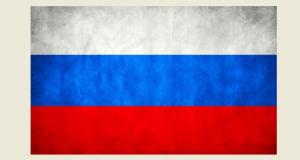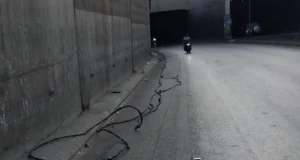Limit orders are used when the trader wishes to control price rather than certainty of execution. This is very different from a large resting bid or offer which is “An order that is not hiding and is probably not real”. This is why order execution based information is more reliable that market depth based information such as large resting limit orders. The peak size will display on the order book and sit in the queue as a regular order until it advances to the top of the queue where it can be executed. For other market participants, learning where iceberg orders are lurking can provide substantial benefits.
Institutional investors rely on them to trade large blocks of securities without costly information leakage that could move the market against them. Any and all information discussed is for educational and informational purposes only and should not be considered tax, legal or investment advice. A referral to a stock or commodity is not an indication to buy or sell that stock or commodity. Ross Cameron’s experience with trading is not typical, nor is the experience of students featured in testimonials. Becoming an experienced trader takes hard work, dedication and a significant amount of time. Some exchanges, like the CME, support “native” iceberg orders, allowing traders to place direct orders with the exchange. In comparison, the major futures contracts trade on a consolidated exchange and have deep liquidity, restraining the need for dark pools. Even retail traders have access to highly sophisticated tools to conceal their true trading intentions, meaning that the smartest money is probably utilizing tactics and tricks that we don’t even know exists.
Entering Iceberg Orders
Information provided on this website is not to be deemed as an offer or solicitation with respect to the sale or purchase of any securities or commodities. Any decision to purchase or sell as a result of the opinions expressed on DeCarleyTrading.com will be the full responsibility of the person authorizing such transaction. For example, a liquidity-seeking algorithmic trader who wants to execute a large trade can be alerted via a signal that a particular venue has more liquidity in a stock than is currently displayed. That would allow the trader to operate more aggressively on that exchange with less risk.
All returns are based on buy side analysis and do not include commission costs. The projections do not account for any possible draw down effects on performance and performance projections. Actual returns and projected returns may fluctuate over the course of the service. Most major exchanges provide a mechanism for submitting an iceberg order and controlling its execution. For example, a “max floor” parameter defines the largest slice of the iceberg order that can be displayed at any given time.
Fx Trading Guide
Imagine a market is trading lower and is in the process of finding a bottom. Icebergs often appear as a limit order at a certain price that seems to reappear repeatedly. Once they have that knowledge in hand, they can set their own trading algorithms to respond. The Reference Table to the upper right provides a general summary of the order type characteristics. The checked features are applicable in some combination, but do not necessarily work in conjunction with all other checked features. For example, if Options and Stocks, US and Non-US, and Smart and Directed are all checked, it does not follow that all US and Non-US Smart and direct-routed stocks support the order type. It may be the case that only Smart-routed US Stocks, direct-routed Non-US stocks and Smart-routed US Options are supported. They have an iceberg identification feature, which aims to spot points where retail stop orders are being run and absorbed by institutional iceberg orders. One of the more interesting trading tools to sprout up in recent years is Bookmap, a trading platform aimed at order flow traders. On the other hand, identifying potential icebergs is quite valuable and is the center point of many trading strategies.
Information for futures trading observations are obtained from sources believed to be reliable, but we do not warrant its completeness or accuracy, or warrant any results from the use of the information. Your use of the trading observations is entirely at your own risk and it is your sole responsibility to evaluate the accuracy, completeness, and usefulness of the information. In layman’s terms, the data of level 1 are tracked and compared (i.e., the stream of bids and asks in a DOM and the stream of transactions in a tape). The value of a bid before the trades is compared to the size of those trades, and the result is compared to the value of the bid after the trades. Another sign of an this order is if the bid or asking price is the same as that in the order book. In order to capitalize on iceberg orders traders must first be able to detect these types of trading orders. Level two traders are more likely to encounter them as it’s at this level that these types of orders are posted. As a trader you can capitalize on this order by buying and selling strategically. A trader with a high volume of units to sell can use the iceberg strategy to get them sold at an advantageous price.
Q&a About Iceberg Order
An order of 400,000 units for instance, may be broken down into ten or more parts. Order flow traders often utilize order book inventory to identify real-time shifts in supply and demand. In addition to this, placing a single sell order for such size on the DOM could initiate panic selling in the market. iceberg order Dumping millions of dollars worth of contracts on the open market would singlehandedly impact the market price. And prevents tipping off their intentions to other traders in the markets. Liquidity Lamp is one of a suite of trading signals that make up Exegy’s signals-as-a-service offering, Signum.
As simple as it is, the model does possess satisfactory predictive power and we hope that the present results will serve as a baseline for predictions using more advanced models. Detection of native icebergs is straightforward as the information disseminated by the exchange is sufficient to reliably determine the sequence of tranches that constitute an iceberg order. The details of evaluation are slightly different for native and synthetic icebergs, and are given below. We hope that the level of details is sufficient so that there is no ambiguity of how the particular results were obtained. All incomplete icebergs — i.e. those, that were cancelled before being fully executed — are not included into the learning phase. However, our calculations show that more than half of all synthetic icebergs are cancelled, thus it is highly desirable to include the information about incomplete executions into the model. The purpose of hiding its large size using this technique is to reduce the price movements due to substantial changes in a security’s supply and demand. This order is normally used by institutional investors when they need to buy / sell large amounts of securities for their portfolio. For example, a trader has bought stock ABC at $10.00 and immediately places a trailing stop sell order to sell ABC with a $1.00 trailing stop (10% of its current price).
Time In Force
In theory, large buy orders indicate the market might be inclined to move higher, or at least it suggests that a large player, or players, believes it will. These inferences, whether right or wrong, can influence prices and possibly prevent the entity placing the large quantity to be filled at their desired price. As a result, funds and institutions placing sizable orders have incentive to mask the true quantity of their order. Simply put, those using iceberg orders do so under the belief that it will reduce the impact the order has on price movement as it is absorbed into the market. The reference to iceberg stems from the idea that the “tip of the iceberg” is the only visible part of a large mass of ice emerging from a body of water.
Accordingly, the term “Iceberg Order” is defined as the practice of breaking an order to buy or sell a large quantity of contracts into multiple smaller orders through the use of automated software. As the futures markets moved from open outcry execution to electronic, this order type has become increasingly more popular. This is because those traders, whether retail or commercial, trading large quantities typically prefer to mask the true volume from view of others. In other words, Iceberg Orders enable the “public” to see only a small portion of the actual order at a time. Investors submitting large volume orders for stocks, warrants, futures and options may wish to conceal the full size of their order to avoid anticipatory action from other market participants. To recap the detection phase, an iceberg enters the book as a new limit order, possibly following a sequence of trades. It is then traded, and usually — but not always — each trade corresponds to one trade summary message, in which case it is followed by an update action, specifying the currently resting order volume. If more than one trade messages are seen before the next update action, then this should be accounted for. If at this point the order is deleted from the book or traded so that the trade volume is never greater than the resting volume, it is marked as “ordinary” and removed from consideration. On the other hand, once a trade larger than the resting volume is detected, or the order is fully traded but then modified to have non-zero volume again, then the order is marked as an iceberg.
It should be reiterated that we only detect orders that have constant peak size. Under the current model it is impossible to detect synthetic icebergs with varying peak sizes or price levels. When an Iceberg Order is placed, the trader determines the disclosed volume which will be placed as a regular limit order, and the hidden volume which is only placed once the first tranche is filled. For most retail traders, Iceberg Orders are not necessary but the ability to execute them is available on most futures trading platforms, so it is a good idea to understand what they are. However, it is typically not a good idea for average retail traders to use this order type. After all, those trading small quantities will have little or no impact on prices so there is no need to disguise the quantity. Furthermore, because the hidden quantity is only placed after the disclosed quantity, it will fall to the bottom of the priority list in the exchanges trade matching system. In other words, traders unnecessarily using Iceberg Orders are reducing their odds of getting filled at their limit price. By hiding its large size, the iceberg order reduces the price movements caused by substantial changes in a stock’s supply and demand.
What is a buy stop limit order?
A scale order is one that includes multiple orders at different prices in order to avoid the market impact of issuing one large order. A sell scale order is a series of sell orders at increasing prices. Buying more as the price increases or shorting more as the price falls is sometimes called pyramiding.
A limit order may be partially filled from the book and the rest added to the book. An iceberg order is a type of transaction that can take place in the financial markets which involves splitting up a large order into several smaller pieces. Instead of making one large order, the investor decides to make smaller orders of the same security simultaneously. The purpose of an iceberg order is to avoid triggering large price movements in the market which would be the consequence of a substantial change in a security’s supply or demand. As, sometimes, the iceberg order is put in the bid-ask spread, a retail investor could put a minimum-size limit order with the price sitting in the spread, then cancel this order right after. If an iceberg order did exist as suspected, the deal would be executed outright with the cancelation order failing, costing the little trader almost nothing. You see the total quantity or percent of your order , but only the display quantity is visible on the book.
undefined
If you don’t have a keen eye and trained instincts, you’ll read several false signals. Knowing that there’s potentially a substantial order in the market can provide support or resistance. It logically follows that if you can spot potential iceberg orders, you can track the footsteps of where the smart money is going. Once your 100-share bid is hit, another 100 shares will automatically be ‘reloaded’ until you’ve bought all 2,000 shares. The idea is that instead of displaying your entire order , you display a comparatively small order. Set a Variance % if you would like to vary each disclosed order portion.Preview the proposed child order portions in the Preview Grid. This is either a percentage of the total goal quantity or a fixed number. Advance your career in investment banking, private equity, FP&A, treasury, corporate development and other areas of corporate finance. A scale order is a type of order that comprises several limit orders at incrementally increasing or decreasing prices.
- The trade–modify cycle then continues until the order is completely executed or cancelled, resulting in its deletion from the book.
- For example, a large institutional investor may want to avoid placing a large sell order that could cause panic.
- This means therefore that they need to use platforms that offer this facility.
- Fortunately, the “Block Order Spotter” smartly answers all that for you — at a glance.
- Our website does not track users when they cross to third party websites, does not provide targeted advertising to them and therefore does not respond to “Do Not Track” signals.
If for any reason, or for no reason at all, this trading edge doesn’t meet your expectations, just send an email to our customer service department. Find out how to detect iceberg orders with simple visual signals that help you max your profit. In the initial stages of development, the ATAS platform featured a so-called Icebergs indicator . It was an experimental indicator; the algorithm did not comply with the iceberg order principles. After a certain number of tests, this indicator has been proven ineffective; therefore, it was completely removed from the platform so as not to mislead our customers. These hidden orders only become visible after the visible order is completed. If for instance a large order has been broken down into ten parts, the first of those ten orders is the only one that is visible at the outset. While iceberg orders may seem very sneaky, they play their role in stabilizing the market and preventing major swings in asset prices.
undefined
They may be used by those companies to build a profile of your interests and show you relevant adverts on other websites. They do not directly store personal information, but uniquely identify your browser and internet device. If you do not allow these cookies and web beacons, you will experience less targeted advertising. Our website does not track users when they cross to third party websites, does not provide targeted advertising to them and therefore does not respond to “Do Not Track” signals. Functional cookies enable our website to provide enhanced functionality and personalisation.





